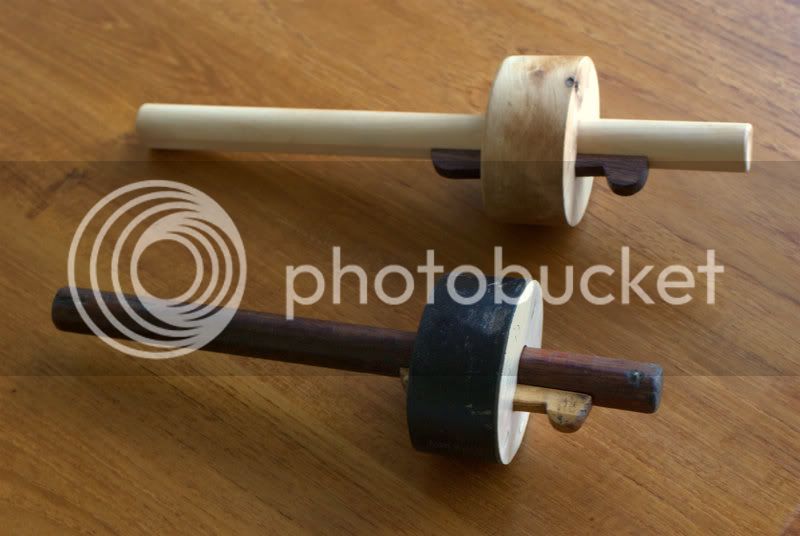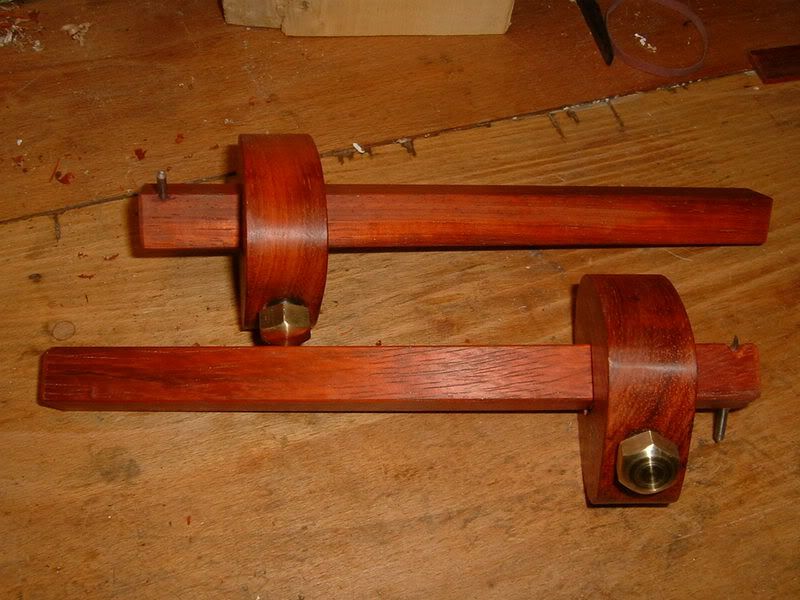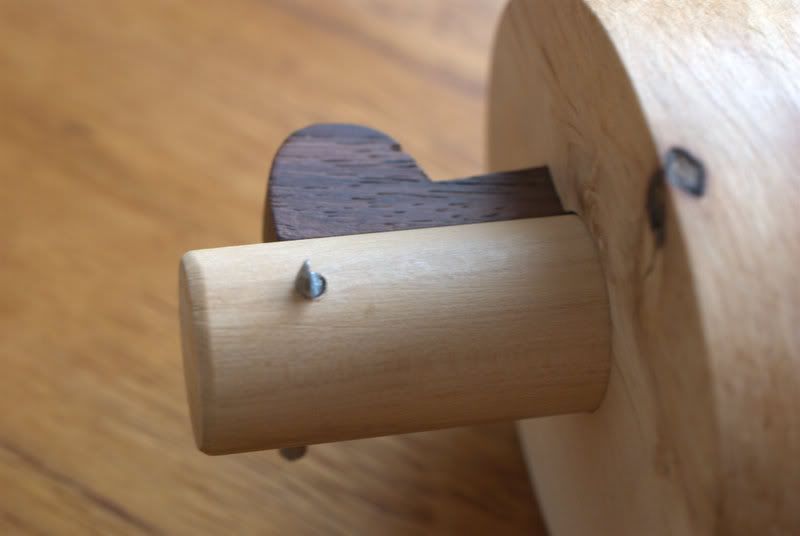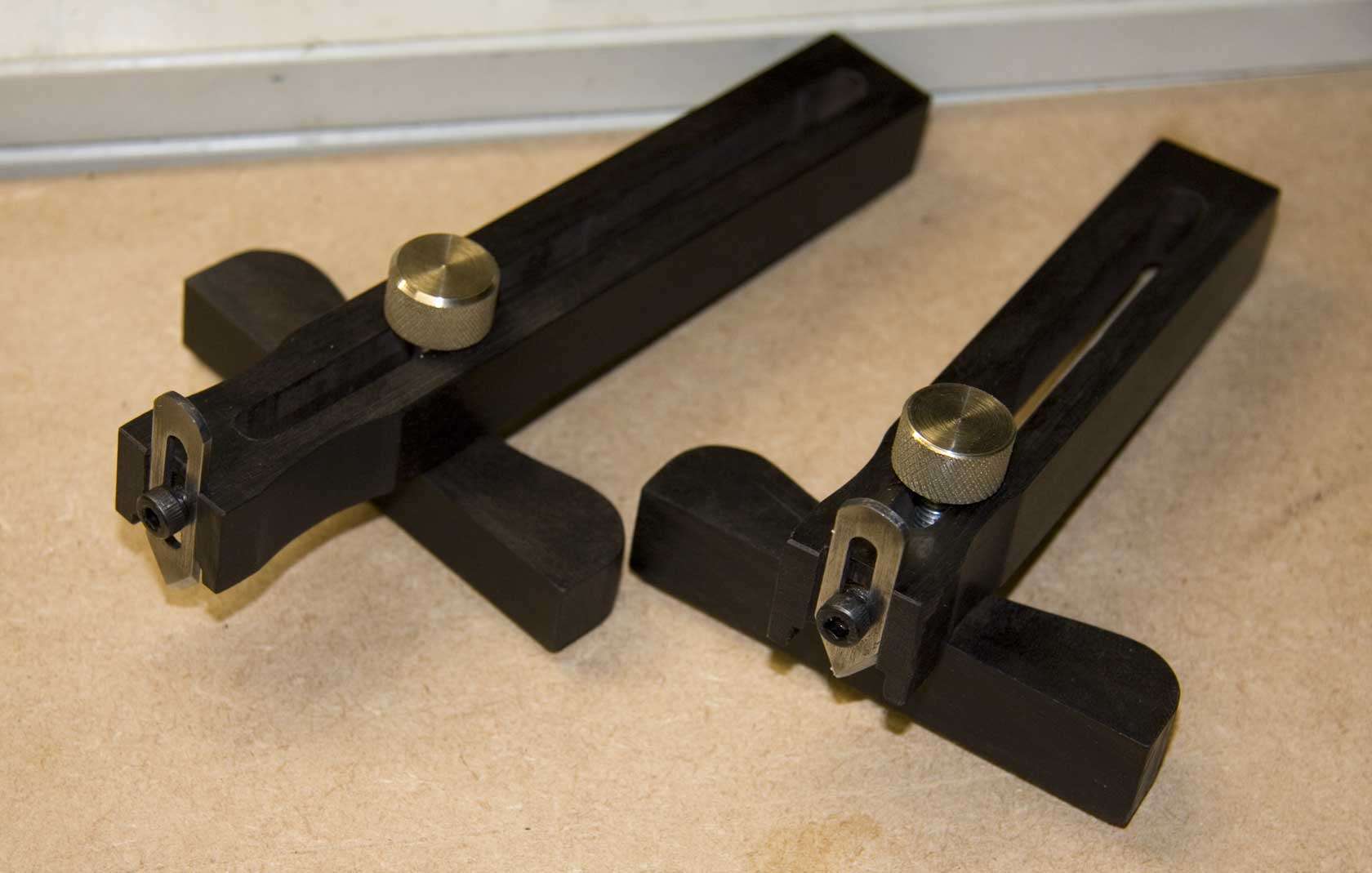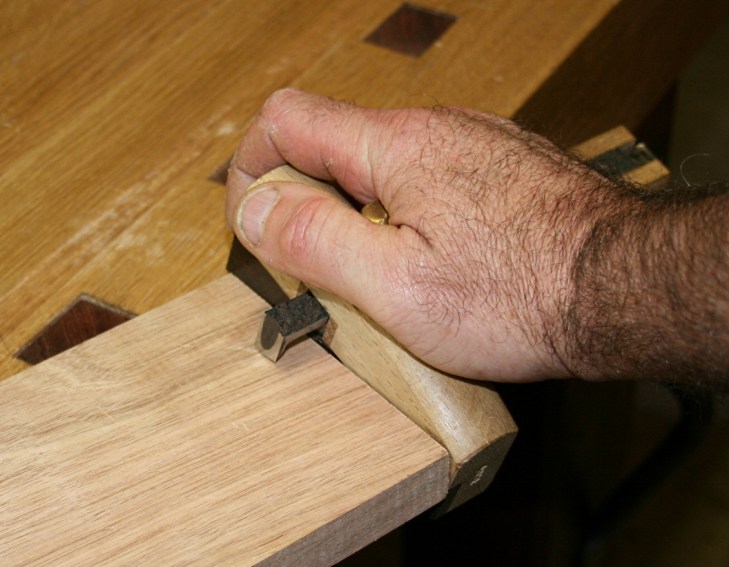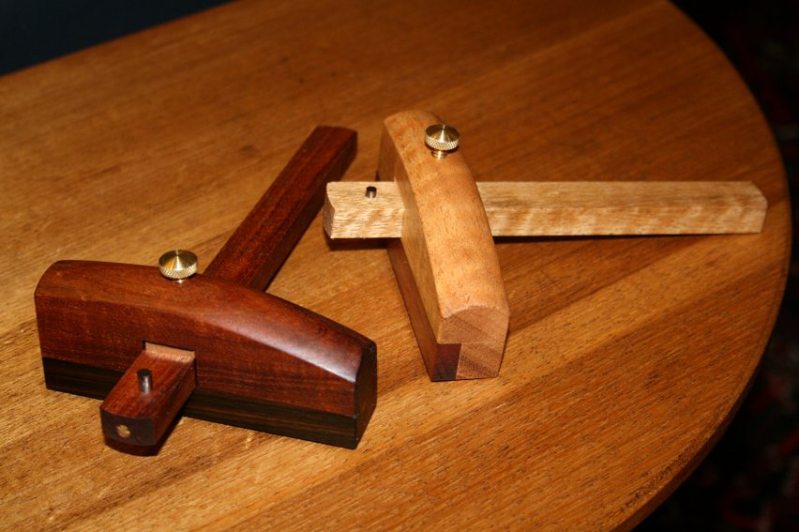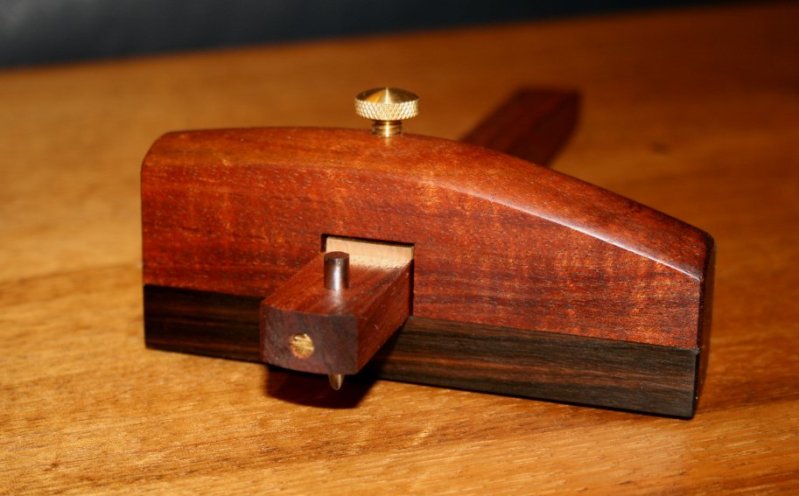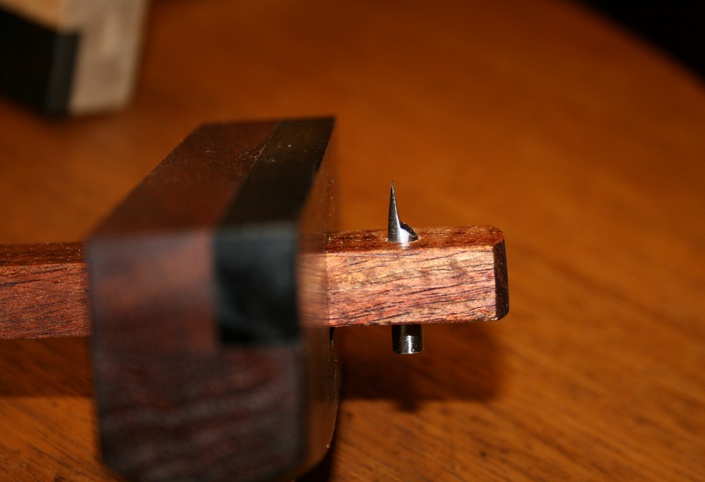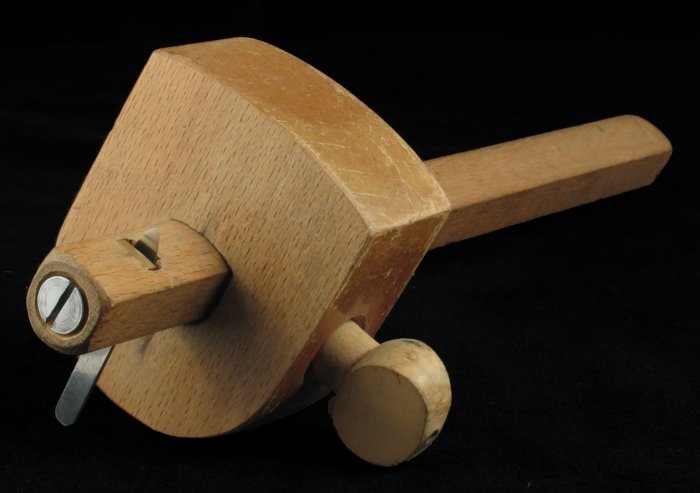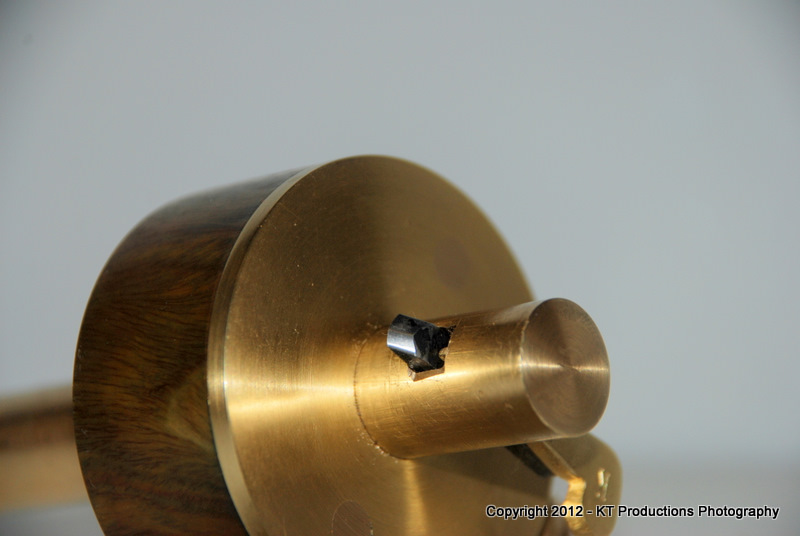I converted a marking gauge to make this; I can make most things, but boxwood thumbscrews are beyond me... anyway, car boot marking gauges are cheap and common.
The conversion was done by making a 25x5 mm strip of power hacksaw blade for a cutter. This involves simple sawing.
Hah! Have you ever tried to saw a power hacksaw blade? They're fully hardened all the way through, unlike hand hacksaw blades. I cut them with a Vitrex carbide coated rod saw, and it takes around 20 minutes. Having done this, grinding and sharpening proceeds as normal.
Holding the blade can be done with a brass wedge, which is attractive and traditional.
I opted for a simple retaining screw. I could probably have simply threaded the wooden stem, but I used a brass "slug" with a 3/16 BSF thread cut into it. The screw is a raised head type.
The neat appearance (neater than my user gauge, which I'll modify soon) is obtained by make a tiny counterbore in the top of the stem, and making the screw short enough (careful!) to go into the counterbore.
Making the rather small mortices to hold the blade and slug is just fiddly work with slender chisels.
And cutting gauges work really well. A better line (IMHO) than even a Tite-Mark, since the blade is easier to sharpen.
Charles Hayward (in his minimal tool set for a beginner) lists a cutting gauge in prefereance to a marking gauge, although everyone (of course) should have both




